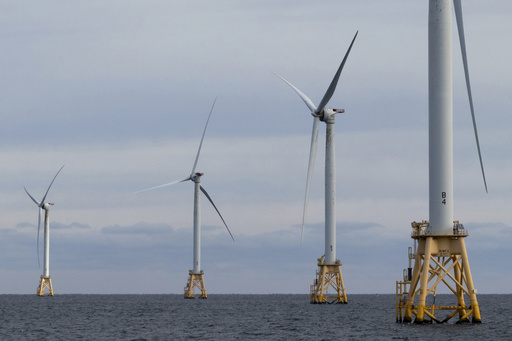The federal government has awarded Maine the first floating offshore wind research lease in the nation. This lease covers approximately 23 square miles (60 square kilometers) of federal waters. The state had requested this lease from the Bureau of Ocean Energy Management for a research array focusing on floating offshore wind technology. The array could feature up to twelve turbines with a capacity to generate 144 megawatts of renewable energy. The site for this project is situated roughly 30 miles (48 kilometers) southeast of Portland, Maine.
The University of Maine has designed the floating offshore wind platforms that will be utilized in the research array. Diamond Offshore Wind, a partner in the project, will be responsible for deploying these platforms. However, the construction of the project is not expected to begin for several years. The research is crucial for the advancement of the ocean wind energy sector in Maine.
Last year, Governor Janet Mills enacted a bill with the goal of sourcing roughly half of Maine’s electric load from offshore wind turbines by 2040. The state has already identified a location where the turbine equipment will be built, staged, and deployed. In the forthcoming decade, researchers at the University of Maine envision towering turbine platforms floating in the ocean, extending over 700 feet (210 meters) into the sky and secured with mooring lines.
Offshore wind energy is seen as an unprecedented opportunity by Governor Mills, offering the potential to create well-paying jobs, diminish reliance on fossil fuels, and combat climate change by reducing greenhouse gas emissions. The lease request was made by the state in 2021 and spans an area larger than initially requested, enabling comprehensive evaluations of the compatibility of floating offshore wind among the state, fishing community, oceanography experts, and industry stakeholders.
Floating turbines are deemed essential for some states to harness offshore wind energy on a large scale. In the United States alone, there is an estimated wind energy potential of 2.8 terawatts blowing over ocean waters too deep for traditional turbines fixed to the ocean floor, according to the National Renewable Energy Laboratory. This capacity could power over 350 million homes, more than double the current number of households in the country.
President Joe Biden has prioritized offshore wind in his strategies to combat climate change. Since the beginning of his administration, the Department of the Interior has given the green light to the country’s first nine commercial-scale offshore wind projects, boasting a combined clean energy capacity exceeding 13 gigawatts, sufficient to power nearly 5 million homes.


